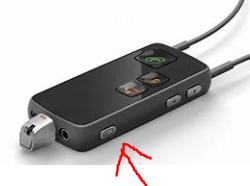FAQs

GENERAL FREQUENTLY ASKED QUESTIONS
What do I do if the equipment isn’t working properly?
Start by making sure the equipment is fully charged and/or trying a new battery if it has an accessible and replaceable battery. Check the troubleshooting guide on our website or the slides from our recent troubleshooting webinar. If the problem persists, please email info@auditoryoutreach.ca or carrie.siu@sd47.bc.ca to describe the issue. If we are not able to provide a solution remotely, you will be asked to complete a tech service request and send the equipment in to PRP. We will repair or replace the equipment and return it.
Can I use my phone charger to charge the transmitter if it has the same port?
Please only use the supplied chargers and cords to charge PRP loaned equipment. Even if it has the same port, different equipment has different power capacities and this can void a warranty.
How do I return equipment to Auditory Outreach?
There are two options to return equipment to Auditory Outreach: Prepaid Canada Post Returns or Loomis Collectship. For more information on these options, please contact info@auditoryoutreach.ca. Please ensure to include return paperwork in the shipment and reach out first to make sure that it is PRP loaned equipment if you are unsure. We cannot repair equipment we don’t own and this saves on costly shipping.
A student has lost their equipment. What’s the next step?
To avoid unnecessary paperwork, please check the school, home, etc. for misplaced equipment. When certain that the equipment is lost, fill in the Equipment Loss Form and send to info@auditoryoutreach.ca or fax to 1-604- 485-2759. Please note that integrated Roger X receivers that are lost with hearing aids also need to be reported as lost. When Roger X receivers are lost, please contact AO-PRP as soon as possible. School districts sign loan agreements for each piece of equipment and will be responsible for replacement cost of loaned equipment.
Why are outreach consultations only offered to students with cochlear implants?
Students with cochlear implants have unique skills sets and learning needs within the classroom. Even the input and signal that they receive is very different to what students with hearing aids hear. Additionally, speech and language skills and targets are often unique to students with cochlear implants. For this reason, the Ministry of Education funds Auditory Outreach to provide specific, expert knowledge on the equipment, learning needs and unique skills of students with cochlear implants. We work closely with the cochlear implant clinic team at the B.C. Children’s Hospital to identify intervention needs and areas of support for this cohort.
Are students eligible to receive services and support from more than one provincial outreach program?
Yes! As long as they meet the individual requirements for each program, students are able to access all the programs for which they are eligible.
What is the difference between Auditory Outreach Provincial Resource Program and Provincial Outreach Program: Deaf and Hard of Hearing (POPDHH)?
While the two programs do have some overlap, there are important differences. We work collaboratively with POPDHH and other provincial outreach programs to best meet the needs of students who are deaf or hard of hearing in the province. The Ministry of Education and Childcare funds Auditory Outreach to provide assistive listening equipment to students across the province who attend public and group 1 & 2 independent schools. Our program has a Ministry funded loan bank of assistive listening equipment, specifically for use by students in BC schools. Additionally, we are experts in remote microphone technologies and focus on the unique skills and needs of students who have cochlear implants. We provide SLP, Audiology and Teacher for the Deaf and Hard of Hearing outreach consultation services to students in B.C. who have cochlear implants. POPDHH also provides consultation to students who are deaf or hard of hearing across the province, including students with cochlear implants. Their team are experts in all communication modalities for DHH students including American Sign Language. More information on the POPDHH programs and services can be found on their website at www.popdhh.ca. The two programs work collaboratively and frequently refer to one another. Students are eligible to receive services from both provincial outreach programs.
We have an SLP, Audiologist, and/or TDHH at the school district, is referring to you stepping on their toes?
Definitely not! Our team works collaboratively with existing school teams to ensure that we celebrate student and team successes and identify priority areas of growth. One major focus of outreach supports and visits is to ensure that the entire school team is working toward common goals and using the same targeted strategies that are specific to that student. School district SLPs, TDHHs, Teachers, EAs, administrators, parents and all team members are invited to be a part of the consultation process and meetings.
What does outreach support look like for students with cochlear implants?
Auditory Outreach consultative support includes but is not limited to:
- Audiology, SLP and TDHH consultative support
- Assessments
- Assistive Listening equipment validation, implementation and technical support
- Long term and short-term goal identification including IEP support, and strategies for school teams
- Resource sharing, training and education for students, school teams, community teams and families
- Promotion of inclusion and advocacy for students who have cochlear implants in school environments
- Professional Development
FREQUENTLY ASKED QUESTIONS: REMOTE MICROPHONE TECHNOLOGIES
How do I know if a Roger X can be installed on a hearing aid with Roger Direct?
If the Roger X receiver has a serial number that starts with 1745 or higher, it is “installable”.
My student has an Oticon/Resound hearing aid. Do you provide any compatible RMT for it?
Yes. The AO-PRP provides audioshoes from all manufacturers to allow hearing aids with DAI (direct audio input) to attach to the universal Roger X. Alternatively, depending on the particular hearing aid model, we provide the Oticon EduMic / Resound Multi Mic which transmits directly to the hearing aid.
Is there a way I can listen to my student’s cochlear implant processor like I do with hearing aids?
It depends on the processor model. Nucleus 6, 7, and 8 come with compatible monitor earphones that allow a hearing adult to listen to the processor. Unlike hearing aids, you will be monitoring the input (sounds that get picked up and processed by the microphones) and not output, which is the electrical signal generated by the implanted electrode in the student’s inner ear. Please request headphones with request.
I am getting a “no receiver detected” message when tapping on “Connect” on the Touchscreen?
Please ensure the receiver is attached to a powered-on processor. Touchscreen needs to be within 2 inches of the powered-on receiver when trying to connect. Try changing hearing aid batteries and wait 10 sec after attaching battery before attempting to connect. See Easy Sheets on our website for connection steps.
My child has a unilateral loss. What is the best RM configuration for them?
It depends on the degree and nature of loss. Many benefit from an ear level receiver-only device on the ear with normal hearing. If aided speech understanding is good on the ear with loss, a personal RM system on that side allows the child to continue to stimulate the auditory nerve in the ear with loss. As recommendation varies case by case, please consult with the child’s audiologist.
My student uses the Oticon Medical Streamer to connect to RM. I have ensured battery is good, transmitter is connected, receiver is attached to the streamer, an streamer is around student’s neck, but student is still not receiving from the transmitter?
A common step that gets missed is a 2 sec hold on the AUX button on the streamer.

What is a functional check?
Also called a behavioural check, these checks are done by an adult wearing the RM microphone speaking to the student with RM receiver while standing at least 3 metres away with lower face covered. Confirmation of understanding verifies RM equipment integrity. Questions that require more than a yes/no answer are preferred. E.g. “What is the weather like today?” or ask the student to repeat words if you are able to hear their response.
My student seems to be hearing the teacher in another classroom when their RM is on?
Your student’s receiver is capable of connecting to ONE transmitter only at one time, unless the transmitters are connected to a “Network”. Try re-connecting the student to their teacher’s transmitter. If the transmitter is on a Network (look for the number 1 or 2 on the top of the screen), leave the Network by tapping on New Net -> Yes.
What can I use to clean the RM devices?
A dry paper towel may be sufficient to wipe off any visible debris. Additional debris, e.g. rust on contacts of receiver, can be cleaned using an alcohol wipe. Please make sure devices are completely dry before reattaching. RM equipment are electronic devices and should not be cleaned using any solutions with water.
Can I use RM outdoors?
Yes! RM transmission is up to 40 metres outdoors when it is free of barriers. Do make sure the transmitter is sheltered from rain or snow in the event of inclement weather. A hat or cap may be enough in light rain. It is ok to tug the transmitter inside a jacket, but please check with the student that the microphone does not pick up too much clothing noise.

